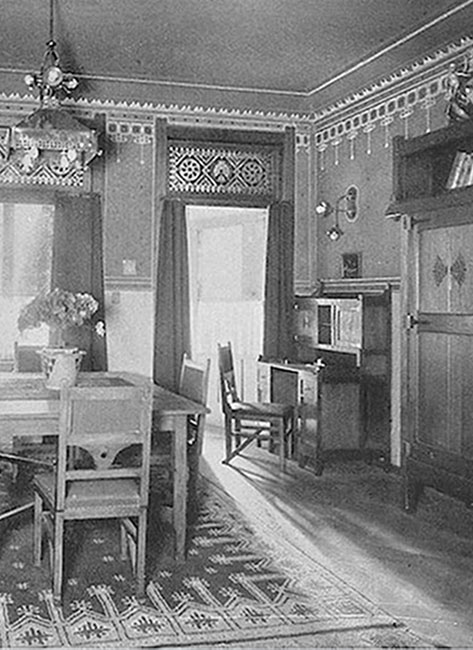Wohnzimmereinrichtung Berlin (DE)
Hendrik Petrus Berlage
Abstract
In April 1905, the department store A. Wertheim opened their second exhibition of ‘Moderne Wohnräume’, replacing the previous permanent exhibition from 1902. Among the 16 participating architects was Dutch architect Hendrik Petrus Berlage, who designed a living/dining room.
Since the end of the nineteenth century, Berlage had been very involved in interior design. For example, he designed the interiors of several villas; the best-known of these is Villa Henny (1898) in The Hague. But he was also involved in the creation of ’t Binnenhuis, a store in Amsterdam that sold local handicrafts; it was meant to be an ‘Amsterdam’ answer, but even more so a ‘Dutch’ answer, to a popular shop in The Hague that specialized in Art Nouveau. Berlage also published on furniture design and interiors, and designed a number of interiors for exhibitions, such as a dining room set for the ‘First International Exposition of Decorative Arts’ in Turin in 1902, and another suite of furniture for the Architectura et Amicitia exhibition in Amsterdam’s Stedelijk Museum in 1905. What strikes most in his furniture designs is his ongoing investigation into the tectonics of the chair, whereby the angled backrest is connected in various ways to the straight legs of the chair. Berlage explicitly cites Gottfried Semper, particularly his reference to the Egyptian ‘proto-chair’.



